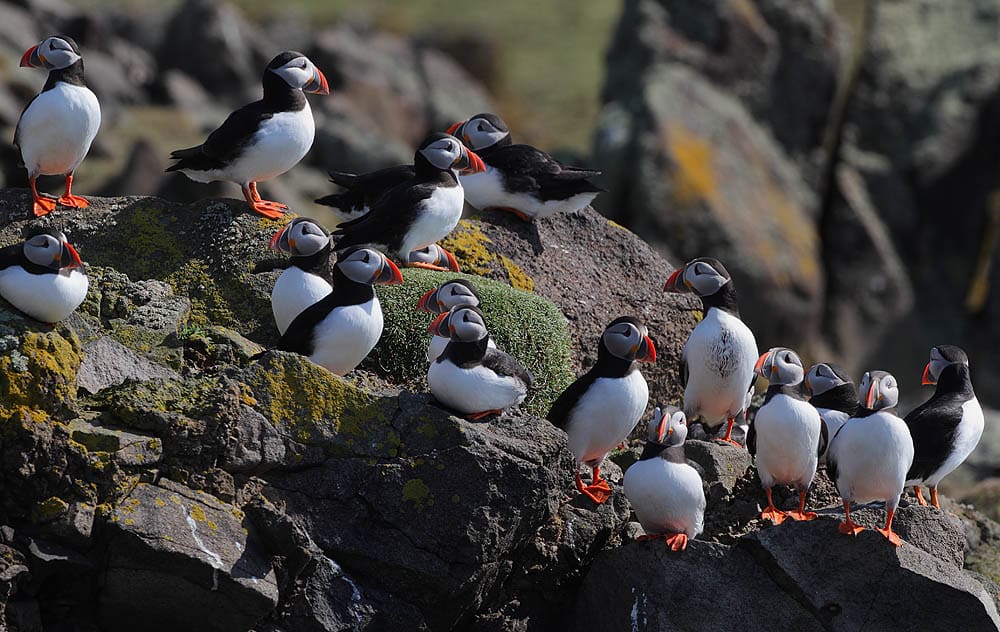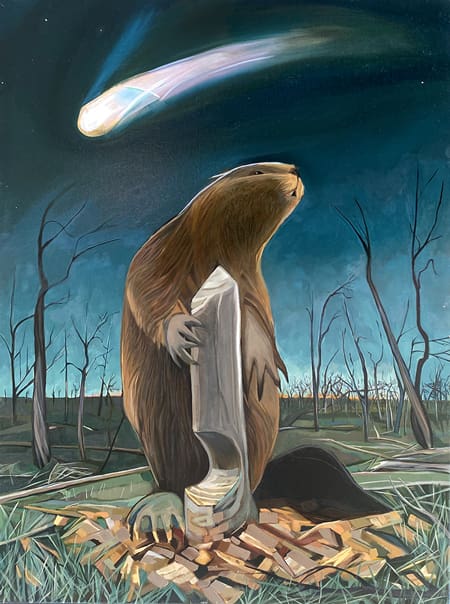What creature has a venomous bite and is uniquely adapted to survive harsh desert terrain?
The Gila monster!
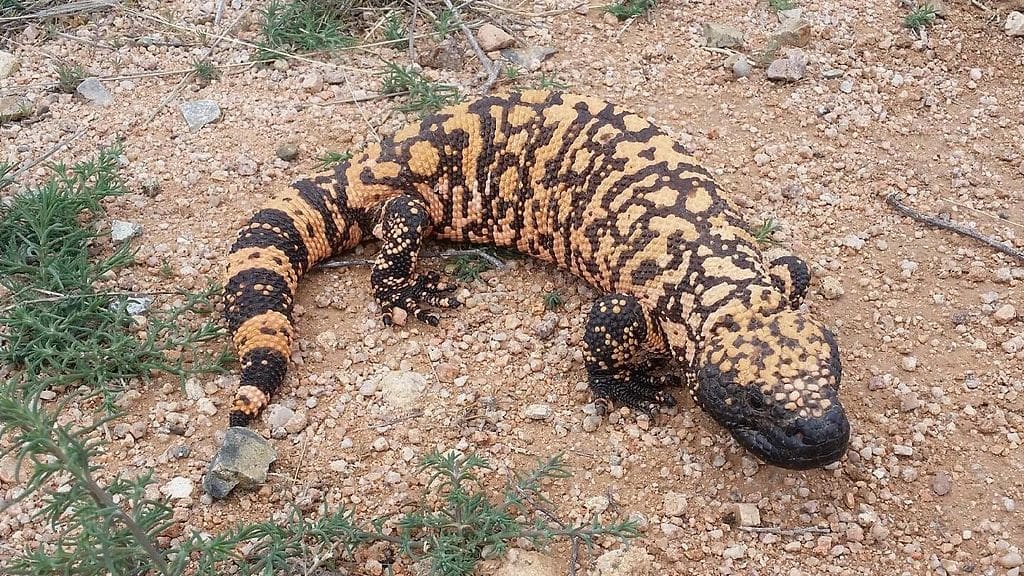
Be not afraid! The Gila monster is not a monster at all, but rather a unique lizard with special adaptations. This reptile is native to North America’s Southwest region including Arizona, Utah, Nevada, and Northwest Mexico. It is so named because of its discovery by herpetologist and paleontologist, Edward Drinkerin, in the Gila River basin.
The Gila monster is a lizard of substantial size, weighing about 1.5 – 3 pounds and clocking in at over 1 foot long. Males are characterized by their larger heads and tapering tails, while females have smaller heads and thicker tails. Its black and orange skin is easily identifiable and comes in two patterns – banded and reticulated. The banded and reticulated Gila monsters are recognized as two distinct subspecies.
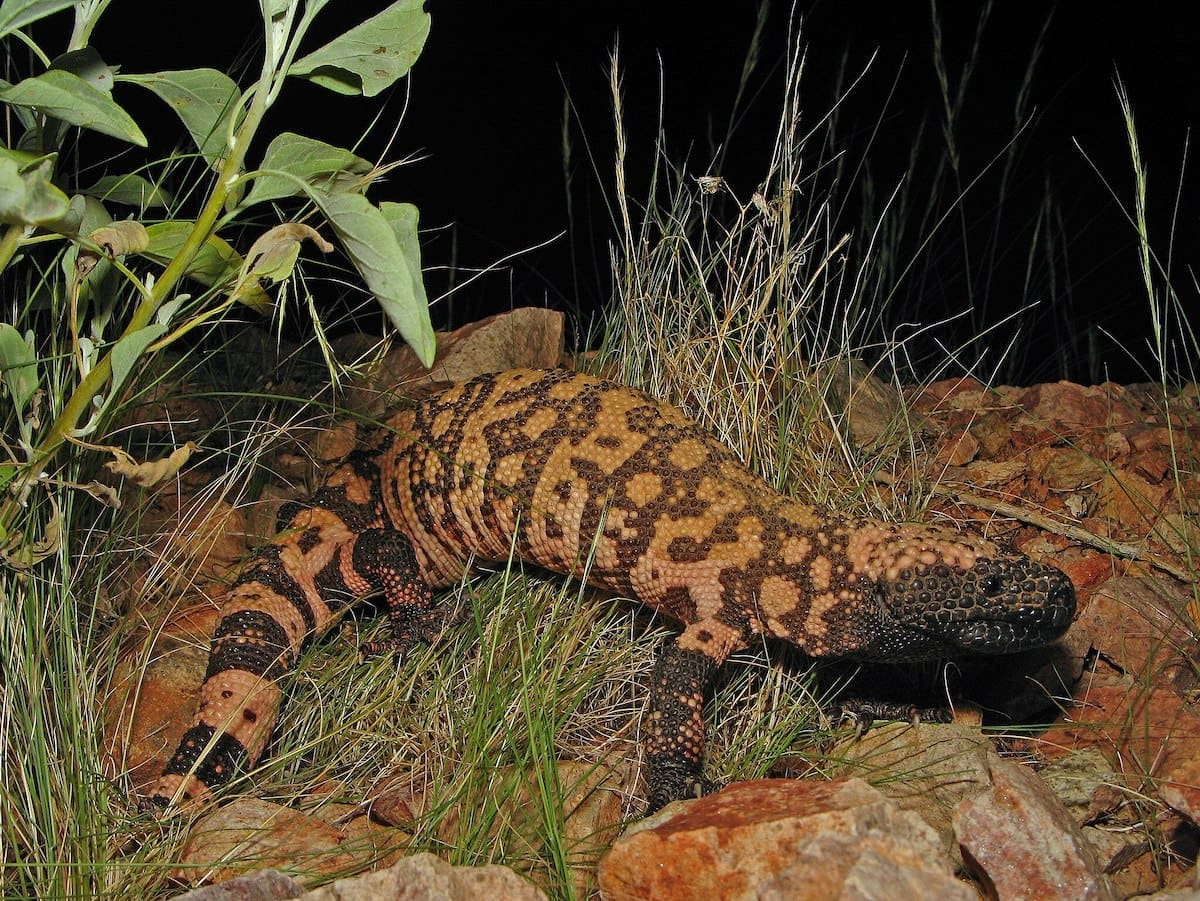
Desert Dweller
This creature is suited for hot, arid environments like the Sonoran and Mojave deserts, where tough skin is needed for a tough landscape. The Gila monster’s beaded skin is created by osteoderms, small bumps of bone beneath its thick skin, that armor the lizard against predators and the harsh terrain.
When desert temperatures soar over 105 degrees Fahrenheit (or 40.5 degrees C), even the Gila monster needs shelter from the sun. Like all reptiles, the Gila monster is cold-blooded and cannot regulate its body temperature on its own. So when it gets too hot, the monster needs to retreat to a shady place to cool down – a burrow. Gila monsters are equipped with long claws to dig burrows in the sand. These lizards spend 95% of their time underground to avoid scorching heat and will often sleep during the day to hunt at night.
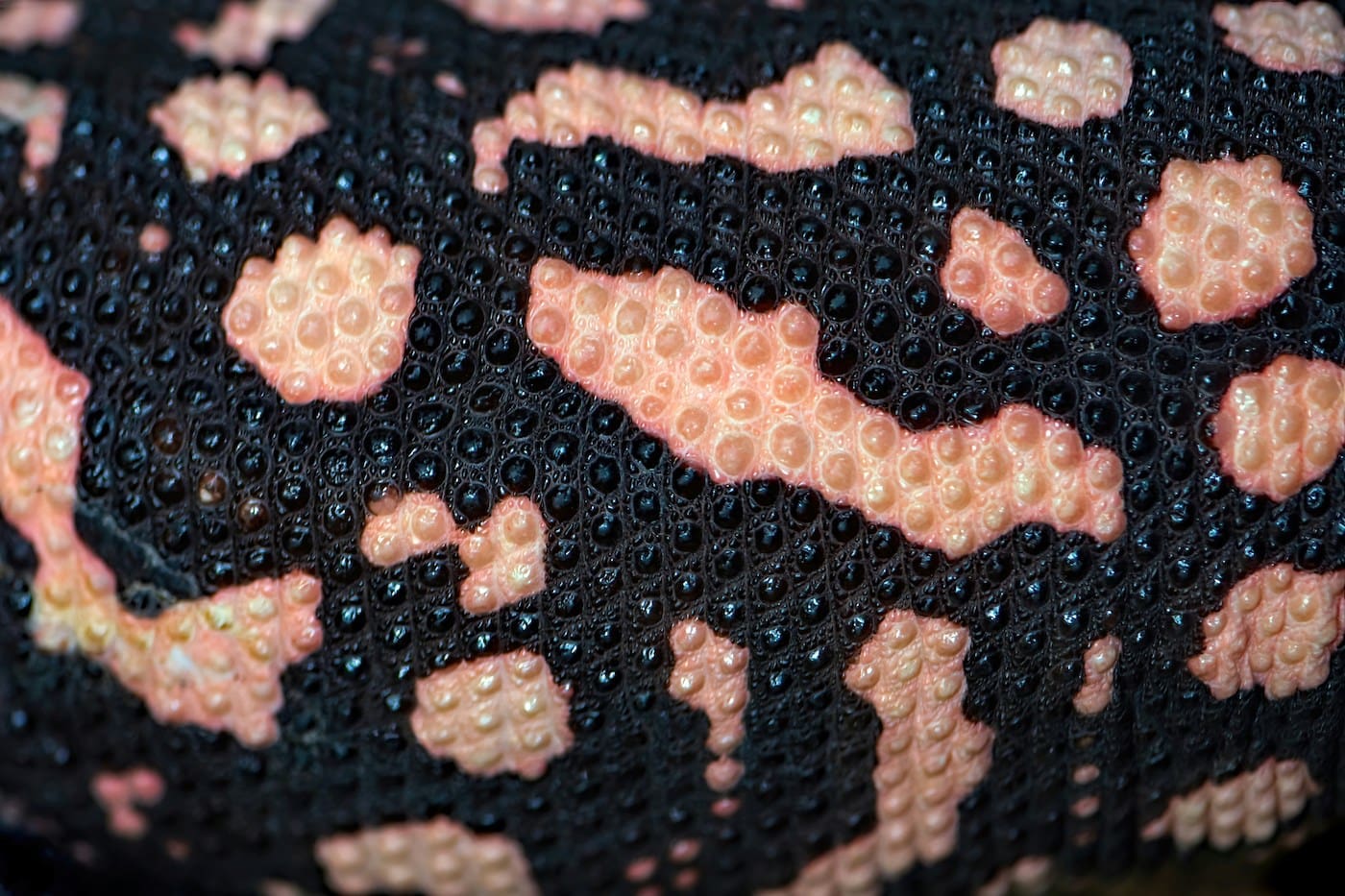
Diverse Diet
Gila monsters prey on insects, birds, small mammals, and frogs. They especially have a preference for eggs and will unearth turtle eggs or raid bird nests. Gila monsters use their forked tongue to process scents and track prey. These carnivorous lizards will climb cacti to devour the eggs of a bird’s nest or even stalk a mouse to its burrow in search of young offspring. In harsh environments, sustenance is difficult to come by so when it gets the chance, the Gila monster can eat 35% of its weight in food. Any unused calories are stored as fat in its tail.
When hunting live prey, it subdues its victim by secreting venom through grooves in its teeth. Venom glands are based in the lower jaw and, unlike snakes that strike and inject venom in seconds, Gila monsters must bite and hold or gnaw their prey to release their venom. They have a very strong bite and can clamp on for over 10 minutes.
While the bite of a Gila monster is painful, it is not deadly to humans. Gila monster venom is most similar to that of the Western diamondback rattlesnake, but the amount of venom released into the wound is much lower. Symptoms from a Gila monster bite include extreme burning pain, dizziness, vomiting, fainting and low blood pressure. Because of their solitary and secretive nature, Gila monster bites are very rare and most cases are from improper handling of these creatures.
Hatchlings
When it comes time to reproduce, female Gila monsters lay 3-20 eggs in their burrows during July. The incubation period for Gila monster eggs can be as long as a human pregnancy, about 9 months. This is unusual as most reptiles incubate their eggs for just 1-2 months. The reason for such a long incubation period is thought to be due to overwintering.
Overwintering is a survival method where hatchlings emerge from their eggs, but not their nest. Gila monster hatchlings stay in their burrow, waiting for weeks to months, for temperatures to rise and food sources to increase. But how can they survive for months without food? Gila monsters are born with fatty tissue in their tails that permits them to forgo consumption. Additionally, they will eat the nutrient-dense yolk from their egg which provides substantial calories.
Baby monsters are just about 5 inches long and look like a miniature version of an adult. When conditions are right, they will leave their burrow to hunt for insects and begin their solitary life in their desert habitat.

Cultural Significance
The Navajo revere the Gila monster as a strong and sacred figure. The Gila monster is often called the first medicine man and had healing and divining powers. Now, the Gila monster is Utah’s official state reptile and represents Utah’s connection to both its Indigenous culture and wildlife.
Despite the recognition, Gila monsters are listed as ‘Near Threatened’ by the International Union for Conservation of Nature (IUCN). There is an estimated population of several thousand left in the wild. Major threats include habitat loss from increased development and illegal poaching for the pet trade.
Venom of Value
The Gila monster’s venom has been a point of interest in the scientific community. While there is no antivenom for bites, there is hope to utilize its venom for medical use. Scientists discovered that a specific hormone within the Gila monster’s venom can alter the way cells process sugar – a potential cure for diabetes. By isolating this hormone, researchers were able to replicate it synthetically. After years of testing, a new drug to help with Type 2 diabetes was released in 2005 under the name Byetta – all thanks to the existence of the Gila monster.
Even the most unlikely organisms can have a great impact on humanity, which is one of the reasons why it is so important to preserve biodiversity. “Monsters”, allies, or wonders – you be the judge.
Signing off for now,
Joely

Joely Hart is a wildlife enthusiast writing to inspire curiosity about Earth’s creatures. She holds a Bachelor’s degree in creative writing from the University of Central Florida and has a special interest in obscure, lesser-known species.
Sources and Further Reading:
https://www.aboutanimals.com/reptile/gila-monster/
https://blog.kachinahouse.com/the-lizard-in-native-american-culture/
https://www.livescience.com/65093-gila-monsters-photos.html
https://lazoo.org/explore-your-zoo/our-animals/reptiles/gila-monster/
https://www.nhm.ac.uk/discover/the-monster-whose-bite-saves-lives.html
https://kids.frontiersin.org/articles/10.3389/frym.2019.00017

